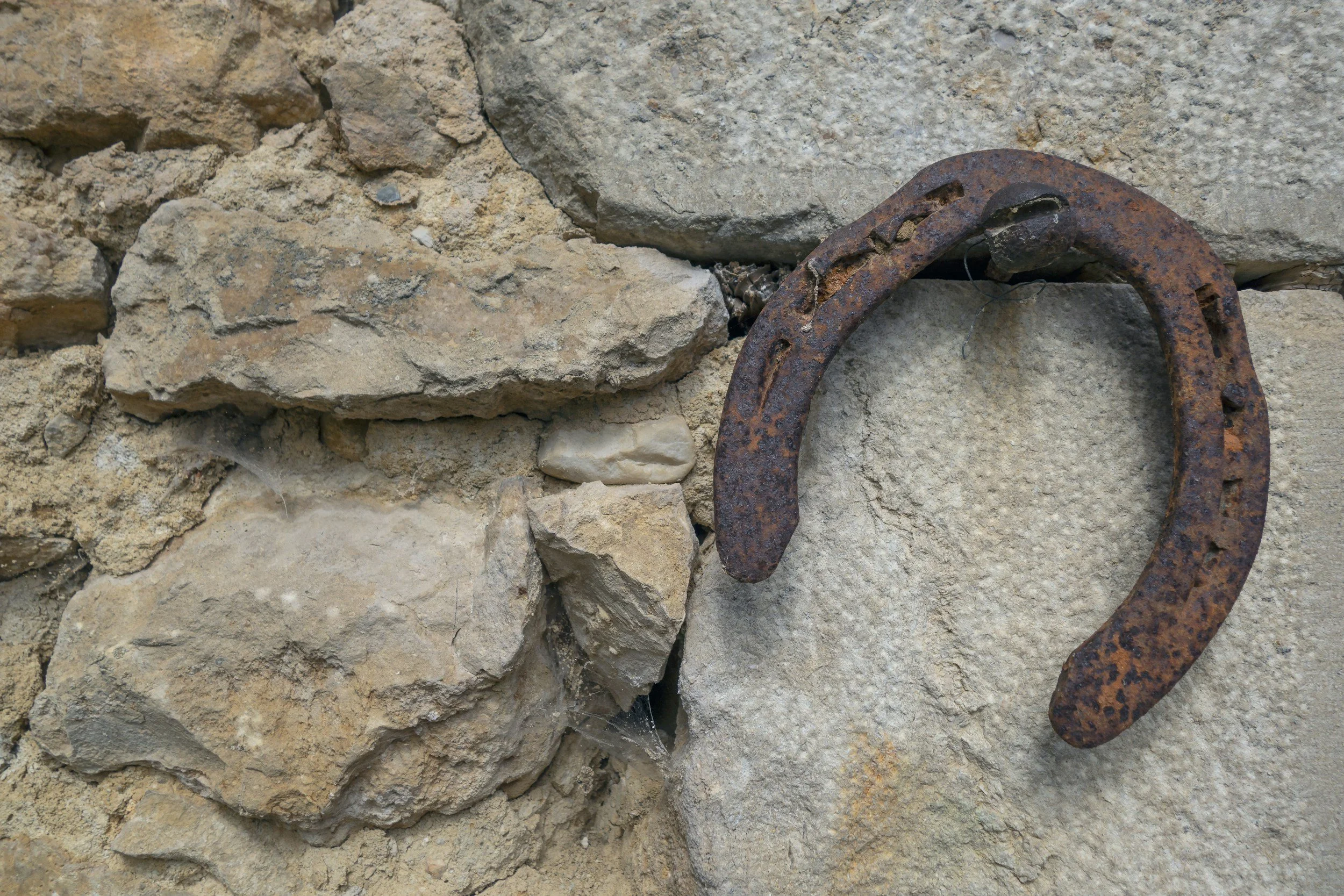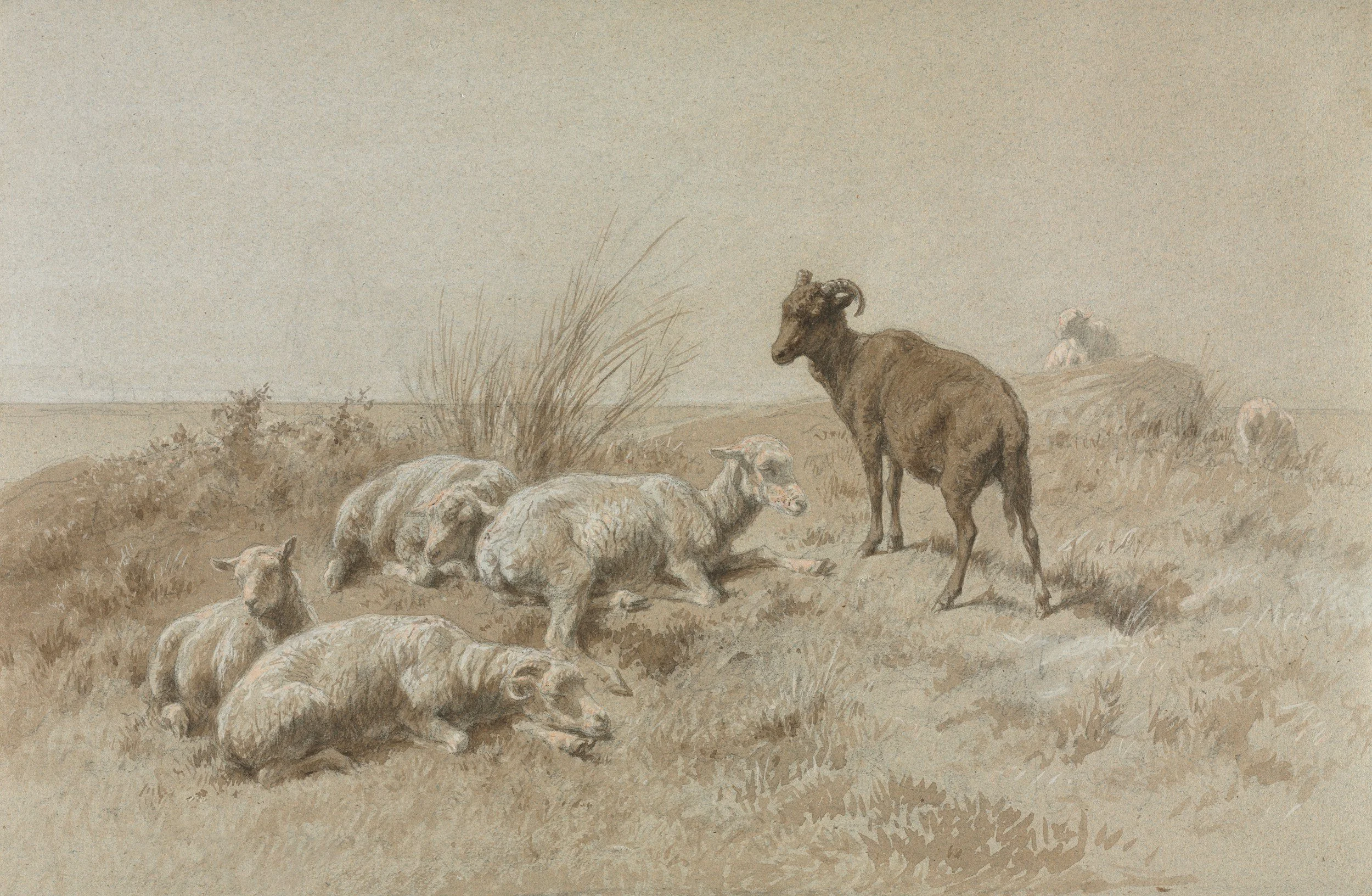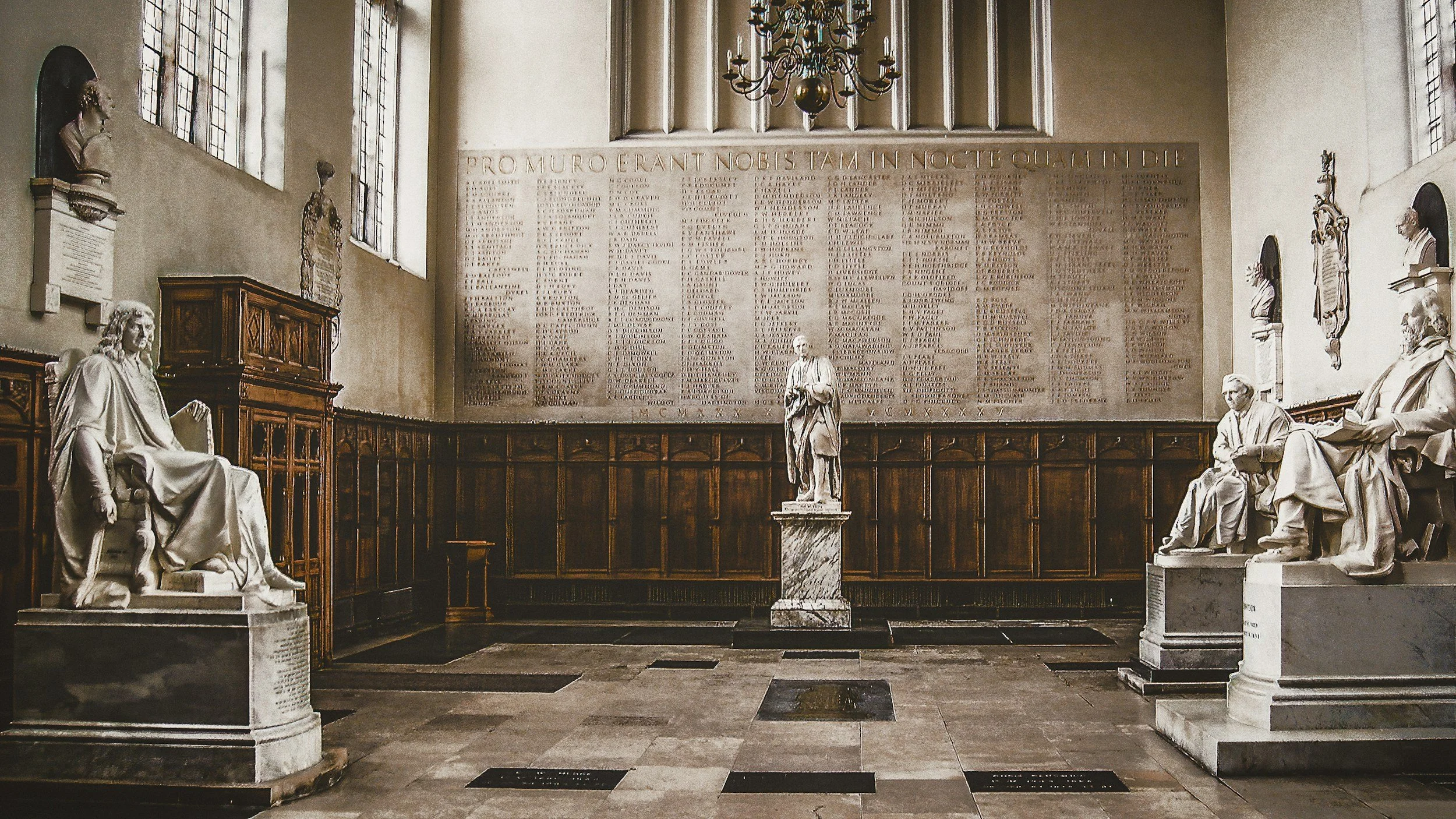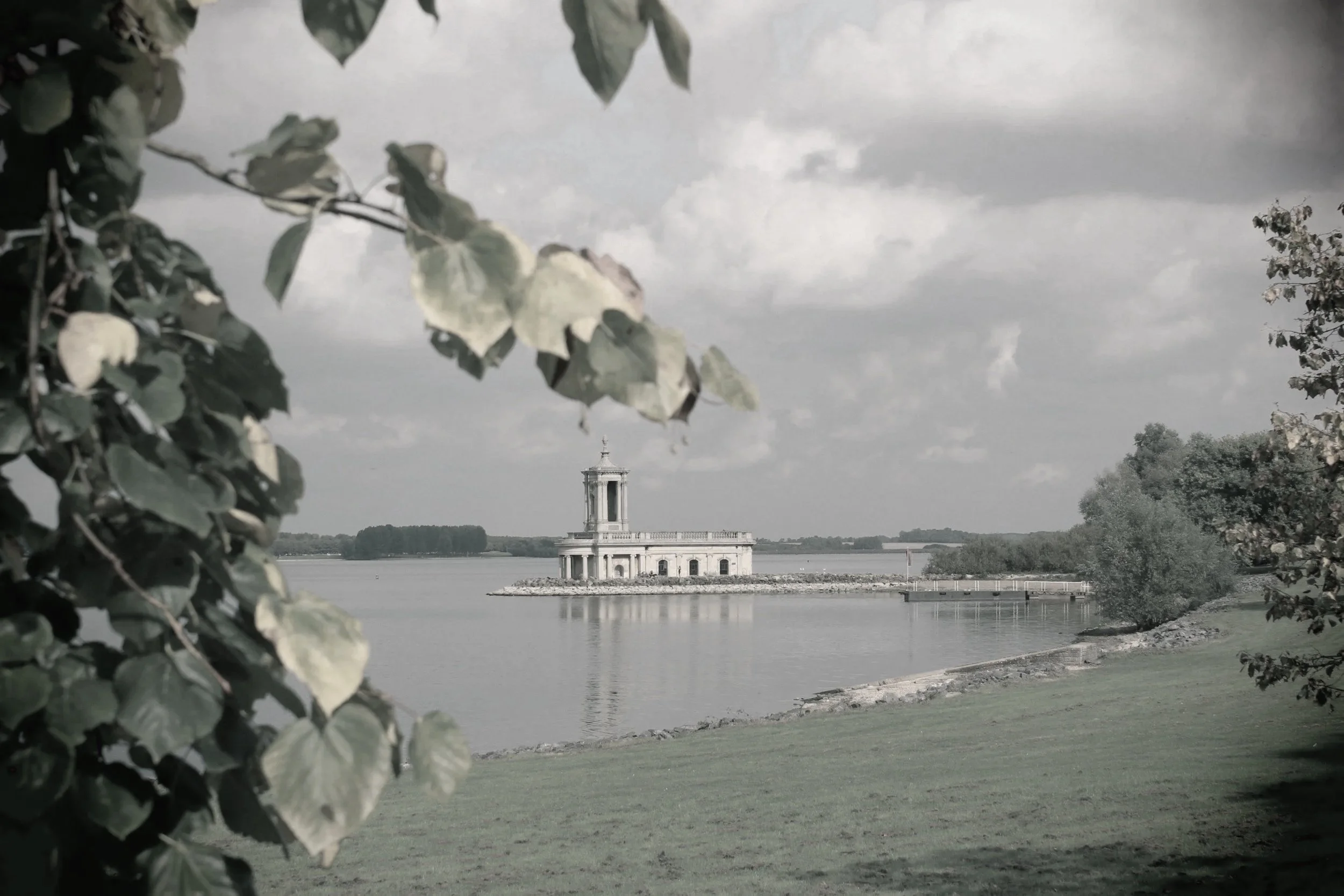
A HISTORY OF THE NOTSWOLDS REGION
The region has not always been known as the Notswolds, but its towns and villages share a long heritage shaped by stone, water, trade and rural life. Over centuries the landscape has carried markets, estates, poets, makers and quiet industry and each era leaves its marks in the fields and streets we know today.
JURASSIC ORIGINS
This is where the story begins. Warm seas lay down the limestone seam that becomes the region’s signature. Everything that follows, from village vernacular to great houses, grows from this geological moment. The landscape acquires its pale stone language long before people arrive.
170 million years ago
Warm shallow seas cover Lincolnshire, Rutland, Northamptonshire and the surrounding counties. The Lincolnshire Limestone Formation begins to settle.
169 million years ago
The Rutland Formation takes shape and preserves early marine reptiles.
Jurassic to present
Clipsham, Ketton and Ancaster stone become some of Britain’s most important building stones and later shape Windsor Castle, York Minster, Cambridge colleges and the Palace of Westminster.
EARLY CIVILISATIONS
Long before towns, estates and trade routes took shape, the region was marked by river settlements, ritual landscapes and skilled metalwork. The Witham, Nene and Welland valleys held communities whose objects and offerings reveal a sophisticated world of craft, ceremony and early exchange.
2500–800 BCE
Bronze Age communities settle along the Witham, Nene and Welland and leave barrows, field systems and river-edge ritual sites. Finds such as the wooden causeway at Fiskerton suggest ceremonial journeys and early trade along these valleys. Flag Fen in Cambridgeshire preserves a 3,500-year-old timber causeway and platform which visitors can explore today.
800 BCE–CE 43
Iron Age societies shape the limestone belt as part of the Corieltavi world with hillforts, farmsteads and wide trading connections across eastern Britain.
Iron Age finds
Discoveries such as the Hallaton Treasure in Leicestershire, now displayed at Harborough Museum, and the Newark Torc in Nottinghamshire, displayed at the National Civil War Centre, reveal the wealth, craft and ritual life of the region before Rome.
Early Roman contact
Objects such as the Witham Shield, now held at the British Museum, show the region as a place of movement and cultural change in the final years of the Iron Age. Leicester grows into the major Roman town of Ratae Corieltauvorum. Jewry Wall Museum in Leicester displays Roman artefacts and sits beside the surviving Roman bathhouse wall dating back to 160 CE.
MEDIEVAL FOUNDATIONS
The Middle Ages lift the region into national importance. Cathedrals rise from local quarries. Monasteries, markets and new towns take shape along the Great North Road. Stone villages settle into the forms we still recognise today. The area becomes a crossroads for trade between London, the Midlands and the North and its limestone defines the architecture of English Christianity.
1070s
Lincoln Cathedral begins to rise in local limestone.
1100s–1200s
Peterborough and Ely grow into major cathedral centres built from stone cut along the Jurassic ridge.
1100s–1400s
Castles at Rockingham, Belvoir, Castle Bytham, Stamford and Fotheringhay shape the region’s landscape and anchor trade routes, river crossings and settlement patterns.
1200s–1400s
Wool from the limestone uplands supports the rise of Stamford, Oakham, Corby Glen and Melton Mowbray as important fair and market towns and ties the region into wider national trade routes. Corby Glen receives a royal charter in 1238 for its sheep fair, now one of the longest running in the country.
1291–1294
The Eleanor Crosses are erected to mark the funeral journey of Queen Eleanor of Castile, with surviving examples at Geddington and Hardingstone becoming some of the finest medieval monuments in England and anchoring the region’s place in history.
1200s–1400s
The Great North Road strengthens as the main route between London and Edinburgh and coaching inns begin to define towns like Stamford, Grantham and Wansford.
TUDOR AND ELIZABETHAN POWER AND PALACES
One of the region’s golden ages. Wealth concentrates in land and the limestone belt produces some of the most significant houses of the English Renaissance. Royal progresses increase movement along the Great North Road. Close enough to reach court yet far enough away to govern and build, the region becomes a place where great houses prosper and play an influential part in the architecture, agriculture and politics of early modern England.
1400s–1500s
The region shifts from medieval markets to early modern power as monastic land is broken up and major estates rise at Collyweston, Burghley, Grimsthorpe, Kirby Hall and Apethorpe which anchor the limestone belt within Tudor political life.
1500s
William Cecil’s influence at court strengthens the region’s national importance as Burghley House takes shape and The George at Stamford is rebuilt to serve courtiers and royal travellers on the Great North Road.
1587
Mary Queen of Scots is executed at Fotheringhay.
1500s–1600s
Improved roads, expanding wool and horse markets and more organised estate farming draw towns like Stamford, Grantham and Melton Mowbray into national trade networks and help carry the region from a medieval economy into a more centralised early modern state.
17TH CENTURY SCIENCE AND CHANGE
The seventeenth century brings both upheaval and change. Civil War cuts through the country while enclosure spreads and planned farms and estate villages begin to take shape. Newton’s home in Lincolnshire links the region to the seat of power and innovation, and improving roads, bridges and inns strengthen movement across the counties. It is a century that shifts the region toward early modern estates and wider national networks.
1600s
Enclosure reshapes the countryside as open fields give way to planned farms, estate villages and more intensive arable and sheep farming across the limestone belt which lays the groundwork for the grand landscapes of the eighteenth century.
1642–1666
Isaac Newton is born at Woolsthorpe Manor and during his return home in the plague years develops ideas on gravity, light and mathematics. He later leads the Royal Mint through the Great Recoinage which stabilises Britain’s currency.
1640s
Civil War forces move between Stamford, Grantham and Peterborough. Oliver Cromwell, born nearby in Huntingdon, rises quickly and leads the armies that shape the conflict. The Battle of Naseby in 1645 becomes the decisive turning point.
1660s–1680s
After the upheaval, market towns such as Stamford, Oakham and Uppingham grow as administrative and trading centres supported by improved roads, bridges and coaching routes.
GEORGIANS ESTATES AND MARKET TOWNS
The Georgian era defines much of what people recognise in the region today. Estates set out the long views, parklands and planned farms that still shape the countryside and market towns take on the stone-fronted architecture we now associate with the Notswolds.
1700s
Estates shape the Georgian countryside with planned farms, parklands and avenues. Local limestone is used for major houses across Britain and our gives market towns their familiar, handsome architectural character.
Mid 1700s
Capability Brown reshapes Burghley and influences Belvoir, giving the region the long views and sweeping parkland his work is best known for.
Late 1700s
Coaching routes strengthen Stamford, Grantham and Wansford and the inns and Georgian frontages built for travellers shape the market towns that follow.
Early 1800s
Movement fuels local culture. The Great North Road brings trade and travellers and helps cement food traditions such as Stilton and Melton Mowbray pies.
VICTORIAN RAILWAYS, INDUSTRY AND AMBITION
The Victorian and Edwardian years bring rapid change. Railways redraw the map, market towns adapt and new industries grow around quarries, brickyards and engineering. Local limestone travels across Britain and is used in stations, civic buildings and Gothic revival projects. New houses such as Harlaxton Manor rise in confident Victorian styles while earlier estates like Belton are remodelled and modernised. Rural life becomes more structured as estates modernise, farms expand and field sports take on the forms recognised today.
1820s–1840s
John Clare of Helpston and Tennyson of Somersby give the region an early literary voice and help shape the Romantic movement.
1840s–1860s
Railways arrive and transform movement. Stamford, Grantham, Oakham, Melton Mowbray and Market Harborough become key junctions and their stations and viaducts still mark the landscape.
Mid–late 1800s
Melton’s hunting and horse culture grows and rural Leicestershire and Lincolnshire supply cavalry horses to the British Army, strengthening the region’s association with field sports.
Late 1800s
Local quarries industrialise and begin supplying limestone for major Victorian civic projects across Britain including universities, museums and railway stations which expands the region’s reach far beyond its towns and villages.
WORLD WARS AND RENEWAL
The Midlands counties become strategically important as towns, airfields and farms adapt to the pressures of wartime Britain. Market towns settle into their modern form and late-century projects prepare the ground for the modern Notswolds.
1914–1918
The First World War draws on the region’s farms, estates and horse breeders. Lincolnshire develops a major aviation role and Rutland and Northamptonshire support training and supply.
1920s–1930s
Agriculture mechanises and motor transport grows. Market towns and estates adapt to changing labour and land use.
1939–1945
The Second World War. Farming supports national food production, Lincolnshire becomes Bomber County and Leicester and Northamptonshire’s clothing and footwear industries supply the forces.
1950s–1960s
Post-war rebuilding stabilises towns and villages with new housing, schools and infrastructure. Roads improve as rail travel declines.
SHAPING THE NEW REGION
1961 onward
Burghley Horse Trials begins and grows into one of the world’s leading equestrian events.
1967
Stamford became the first Conservation Area designated in England under the new Civic Amenities Act 1967.
1970s
Major works along the Great North Road create the modern A1. Tolethorpe’s open-air theatre and Goldmark Gallery in Uppingham help establish a regional arts scene.
1976
The Gwash Valley is flooded and Rutland Water is completed, creating a major reservoir and one of Britain’s most important inland nature and leisure landscapes.
1979
Margaret Thatcher, born in Grantham in 1925, becomes Prime Minister.
1970s–1990s
Country houses open more widely to visitors. Estates begin to develop the attractions that shape modern visitor culture.
1982
Hambleton Hall earns a Michelin Star and retains it to this day, making it one of the longest-held stars in the UK.
1990s
Osprey reintroduction begins at Rutland Water and conservation projects expand across the region.
THE MODERN NOTSWOLDS
Landscape, food, culture and independents shape the modern Notswolds. Rutland Water anchors the region’s nature identity and market towns gain national recognition for heritage, culture and quality of life.
2000s
Protected status for Melton Mowbray Pork Pies strengthens a modern regional food identity and farm shops, bakeries and small vineyards begin to grow.
2000s–2020s
Stamford, Oakham, Uppingham, Oundle and Market Harborough strengthen as independent high-street towns and still today appear regularly in The Times Best Places to Live lists. Stamford St Mary’s Street later recognised as the UK’s top independent high street (American Express / GlobalData, 2024).
2010s
Nevill Holt launches, developing into the leading arts and culture festival it is today.
2012–2015
The remains of Richard III are discovered beneath a Leicester car park and reinterred in Leicester Cathedral in 2015.
2010s–2020s
Conservation at Rutland Water expands, walking, cycling and open-water leisure grow, and heritage towns receive awards for independent retail and civic quality. Heritage estates expand cultural programmes and outdoor events, shaping the region’s visitor calendar.
2020
Gladwell & Patterson open in the region, now at No.1 High Street, Stamford, and together with Goldmark anchor the fine-art scene.
2020s
National press begin using the idea of the “Notswolds” as they look for Britain’s next rural idyll, spotlighting limestone villages, independents and open landscapes. A new generation of makers and growers helps define a contemporary identity of craft, calm and belonging.










